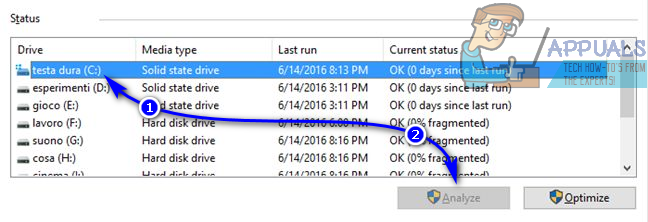Fragmentation on a hard drive can be resolved by simply defragmenting it – during defragmentation, all of the data stored on a hard drive is rearranged so that the imaginary blocks of data are stored contiguously and any breaks in the middle are eliminated. The Windows Operating System has always come with a disk defragmentation utility built in to it. Up until the days of Windows 7, this utility used to be known as Disk Defragmenter and had been changed to an impressive degree. However, with the arrival of Windows 8.1, Disk Defragmenter was completely revamped and turned into the Optimize Drives utility, and it looks like it will remain the Optimize Drives utility for the foreseeable future. This new utility still has the same old purpose, however – to defragment hard drive partitions and entire hard drives that have become fragmented. Defragmenting a hard drive maximizes the transfer rate of files and data to and from the hard drive, and it should only be done to hard drive – you should not try to defragment a Solid State Drive (SSD) or a USB drive. To defragment a hard drive on a computer running on Windows 8.1, here’s what you need to do: The defragmentation process on Windows 8.1 is not very resource-intensive, meaning that you should not at all feel the need to put the use of your computer on hold for the defragmentation of your hard drive – you are completely free to go about using your computer like you normally do while the Optimize Drives utility defragments your hard drive.
How to Block Windows Store in Windows 10 and Windows Server 2019Fix: Error 0x80073CF9 in Windows Store on Windows 10 MobileFIX: Error 0x80246002 and BSOD during Windows Update in Windows 10How to Install gpedit.msc on Home Edition of Windows 10 and Windows 11



